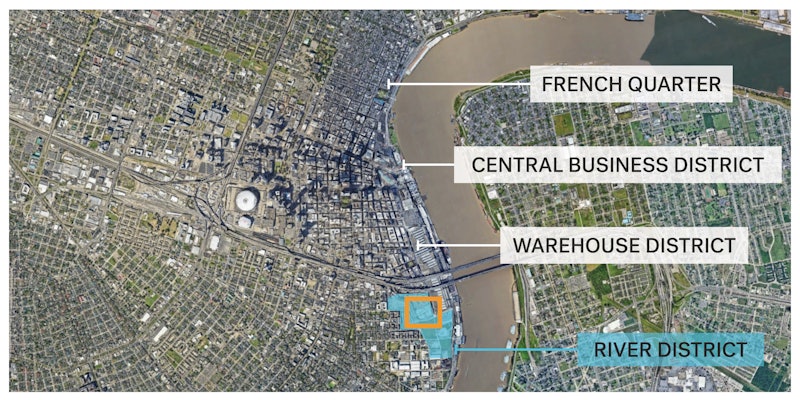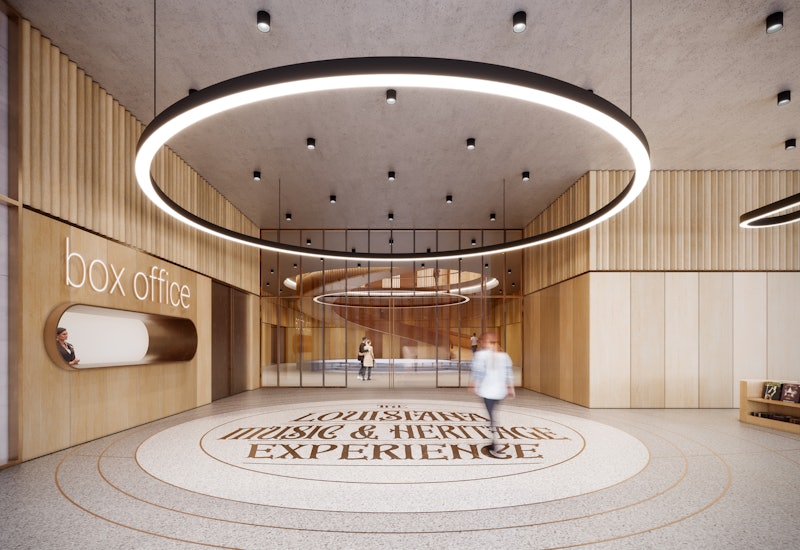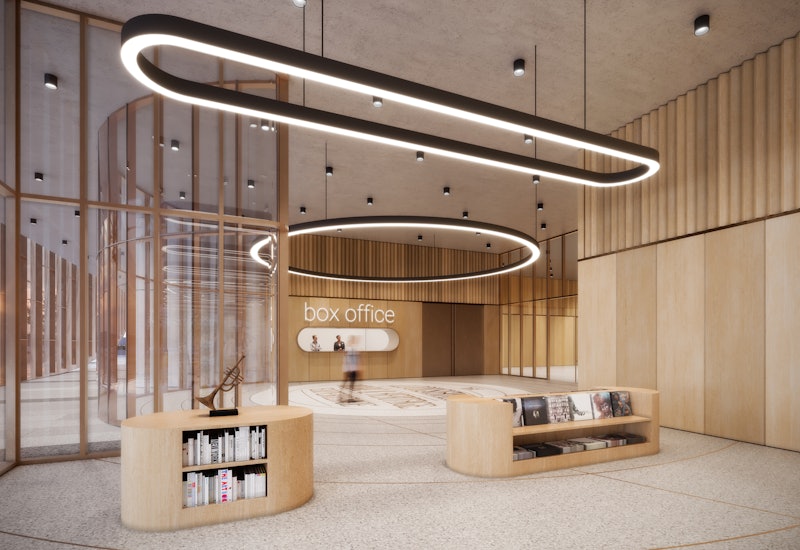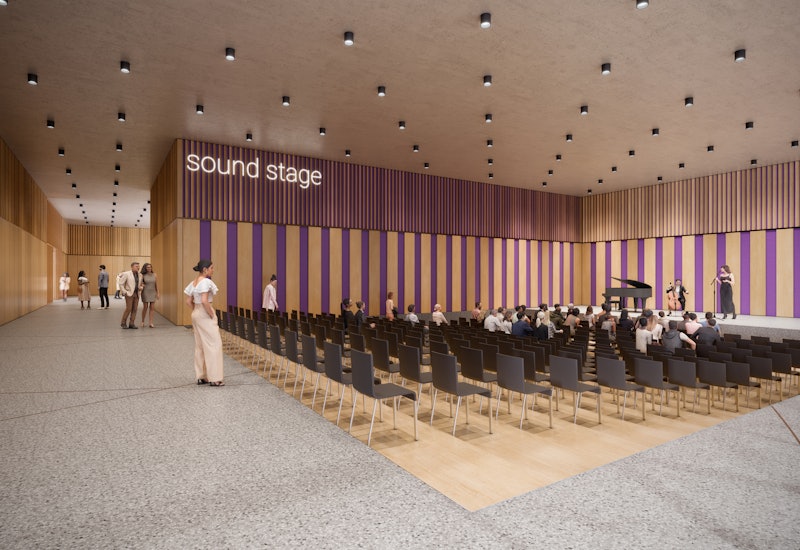

Louisiana Music and Heritage Experience Museum
This concept for a new 120,000 sf music museum is intended to showcase the contributions that the city of New Orleans has made to the local, regional and national music industry.
LOCATION
services
Size
Located across the street from the New Orleans Ernest N. Morial Convention Center in Downtown New Orleans, the museum will serve as a premier destination for visitors and locals alike. The Louisiana Music and Heritage Experience will provide a comprehensive experience in a newly constructed building, complete with state-of-the-art exhibit space, a performance theater or soundstage, a research/archival area, rooftop terrace, multi-purpose event space, an attractive lobby, museum store, and classroom/education areas. There will also include a music club and restaurant for museum visitors to enjoy the sounds and tastes of New Orleans culture.
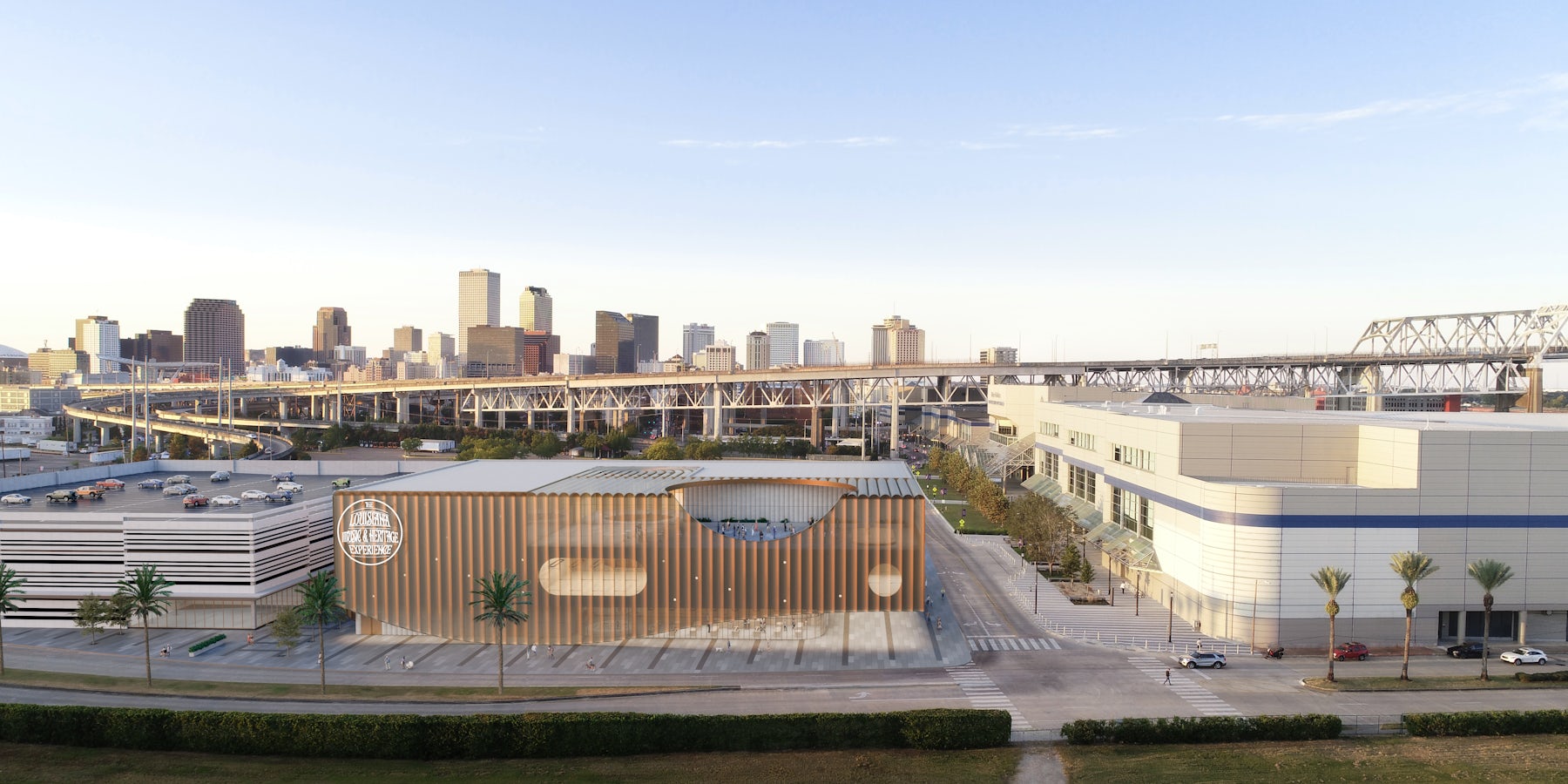
The project will serve as the cultural anchor for the River District, an ambitious, nearly $1B mixed-use development seeking to revitalize a previously industrial stretch of land adjacent to the Convention Center and Central Business District.

While there are several smaller museums in the state and region that celebrate specific genres of music, the complete view of music as it relates to the people and past of the city of New Orleans and state of Louisiana are not yet represented in one space. The goal for the Louisiana Music and Heritage Experience is to create a unified story of music in the Pelican State and to “solidify their music communities’ roles in the ongoing story of American music.”
In envisioning a museum that pays homage to the rich musical traditions of New Orleans and Louisiana, it’s essential to draw inspiration directly from the soulful rhythms and vibrant melodies that define the region’s musical landscape.
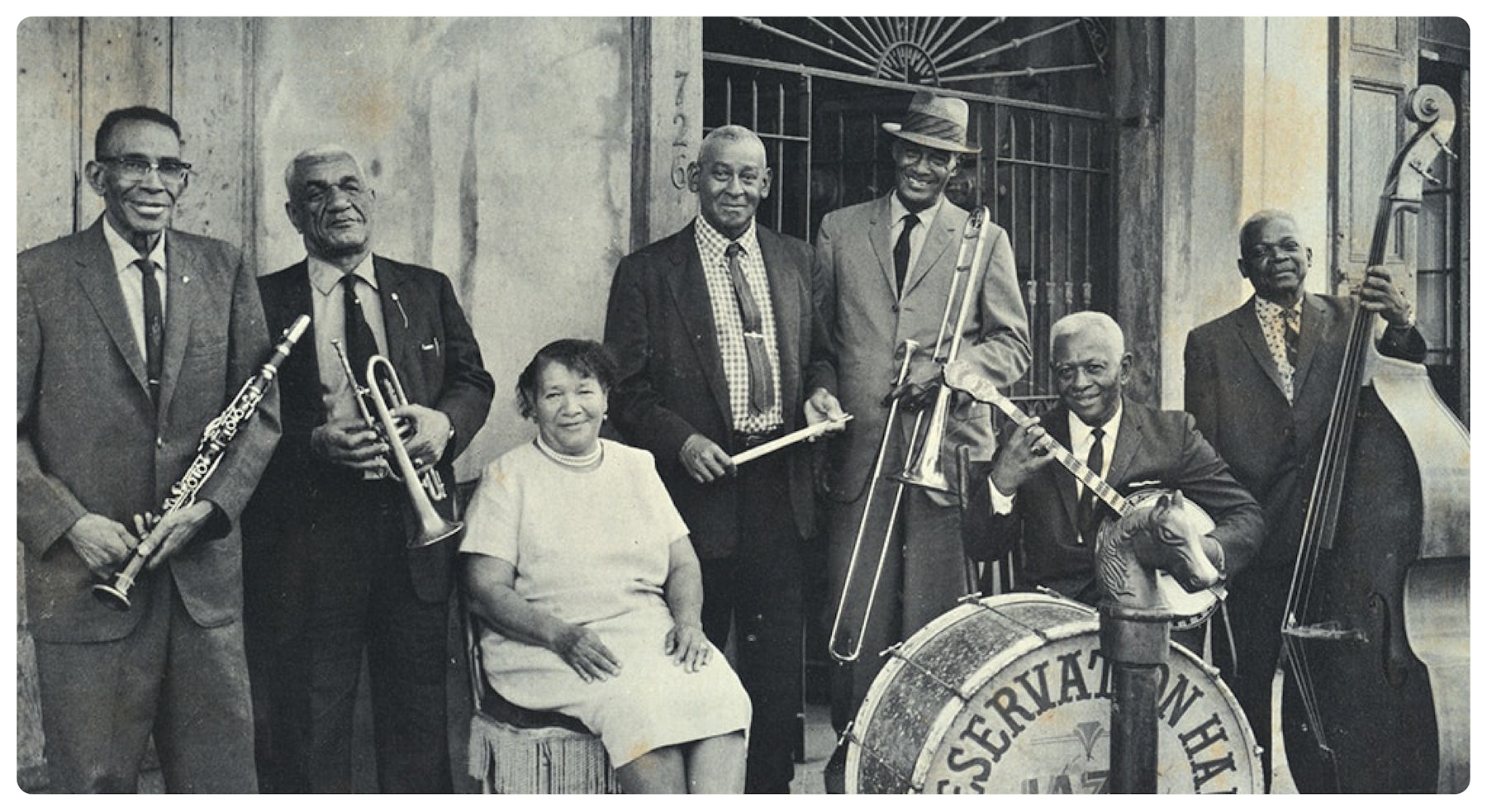
With some genres originating within the state’s borders— like jazz, zydeco, Cajun, and swamp pop, and others settling down throughout the past eras— like hip hop, soul, rap, gospel, blues, country, and even rock and roll, the musical tapestry is complex and layered by life and by people. Influenced by everything from historical events and politics to food and religion, it’s a catalog of creativity, shaped by the hands and hearts of those who compose and perform it.
Housing the music and heritage of Louisiana in one space requires something simultaneously grand and approachable. Those visiting must feel welcome, like part of a close knit-community. The exhibition of music must be showcased as it was created— with a welcoming sense of appreciation for those that came before and a gratefulness of being in the great state of Louisiana.

The design team sought inspiration from music and its source--instruments--and turned to an unlikely partner in exploration--artificial intelligence.
Using the image-generating AI software Midjourney, the design team fed the program images of guitars, violins, saxophones, and cymbals, accompanied by various text descriptions of lighting and material, to create conceptual vignettes the explored form and texture. The team used these as a beginning point for architectural investigation.
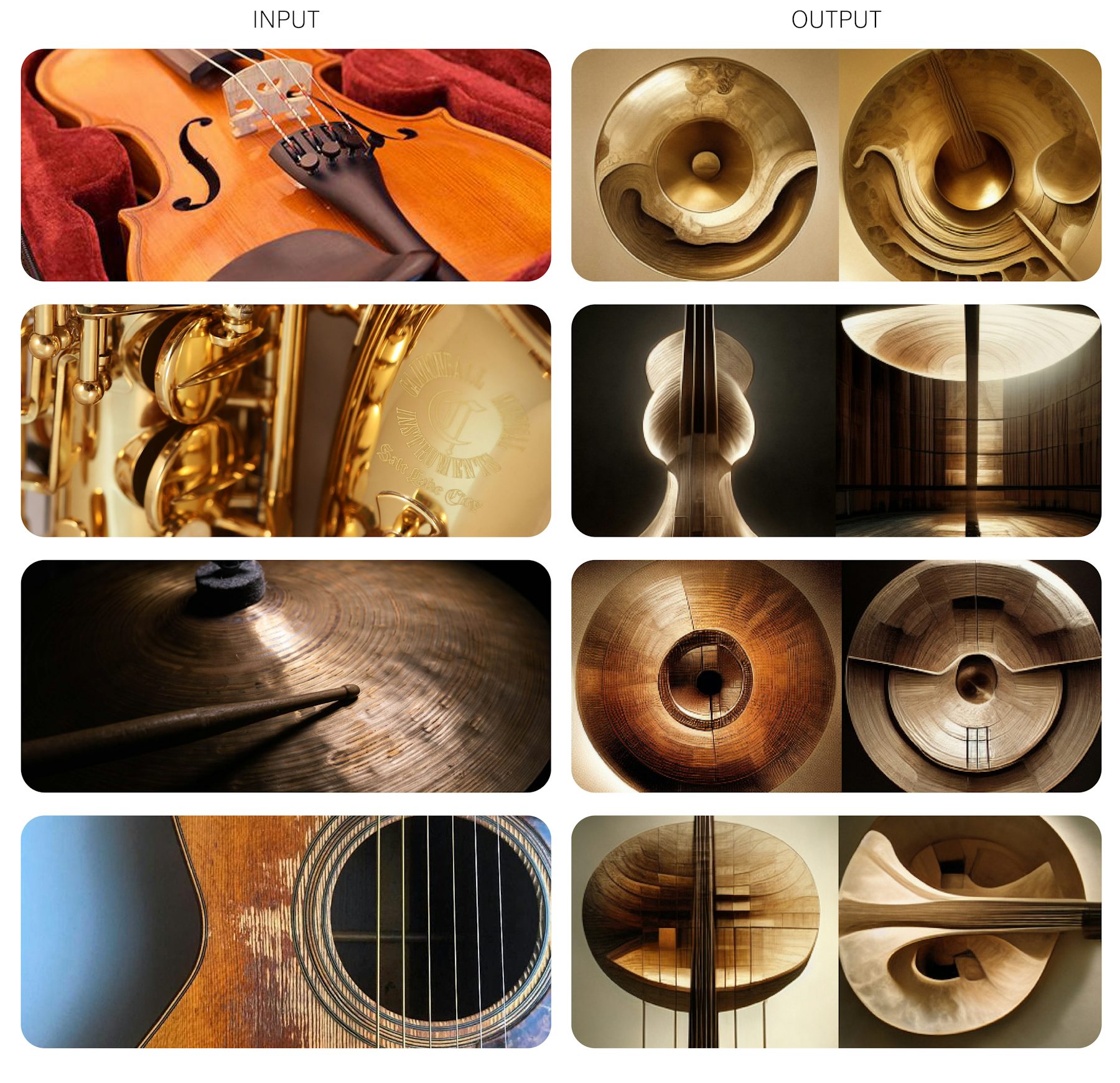
The design team then worked to convert the AI-generated conceptual vignettes into something more spatial and architectural.
Again utilizing Midjourney, the team fed the system back its own images, but this time accompanied by spatial descriptions of architecture.
One can see the constituent parts of musical instruments dissected and overlaid onto intimate spatial vignettes. Concentric rings ascend a vertical plane. A circular form grounds a ceiling detail. Alloys of bronze and brass glow as surface treatments. This unique pairing of technology and human creativity broadened design thinking and created swift unexpected design iterations.

In parallel to using AI, the design team also explored subtracting various instrument profiles to create unique tectonic possibilities. The team experimented with varying scales, proportions and orientations to translate the intricacies of musical instruments into tangible architectural expressions. The designers explored how light and shadow interacted with the carved forms, emphasizing certain details and creating a dynamic between space and volume.
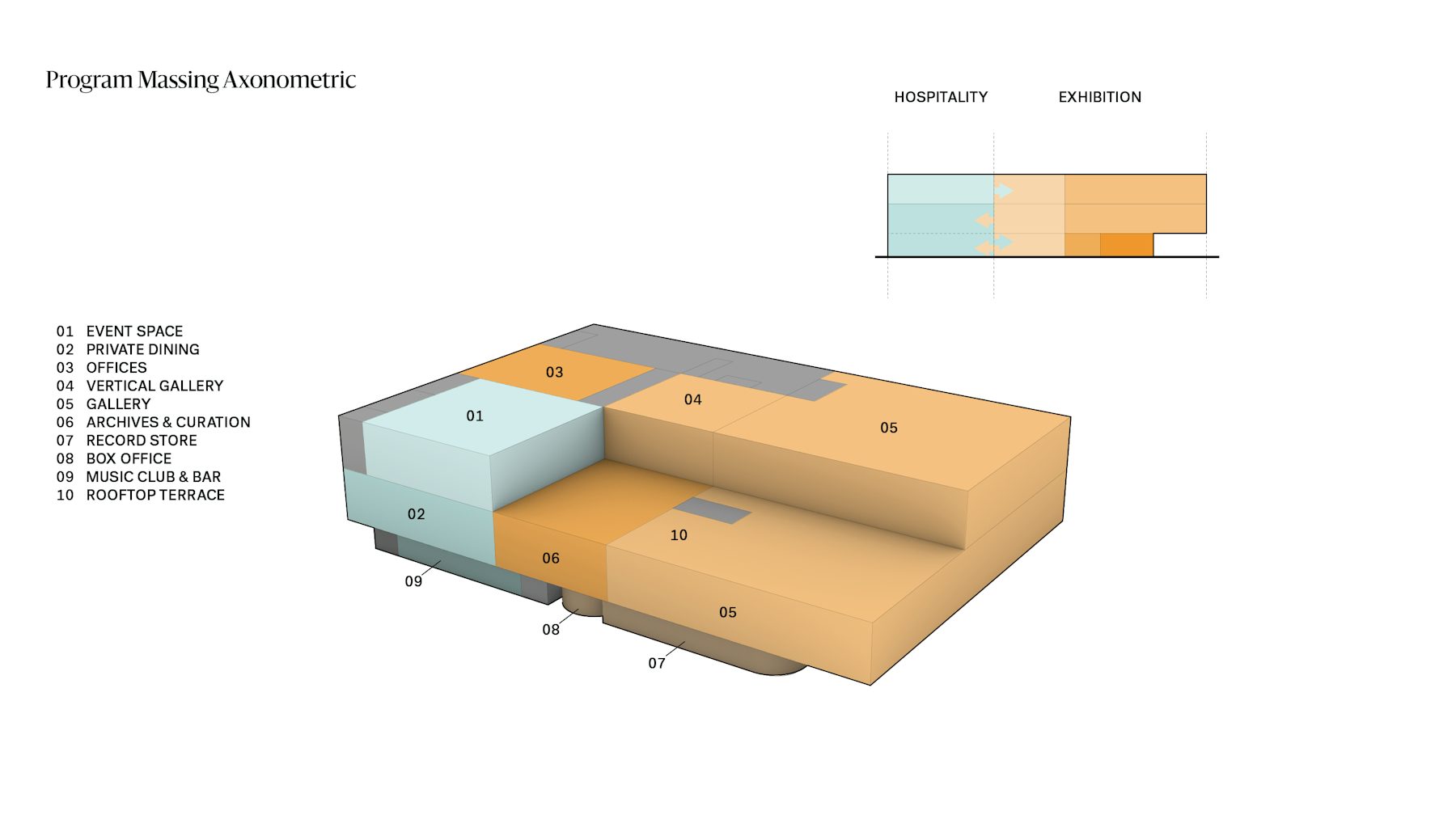
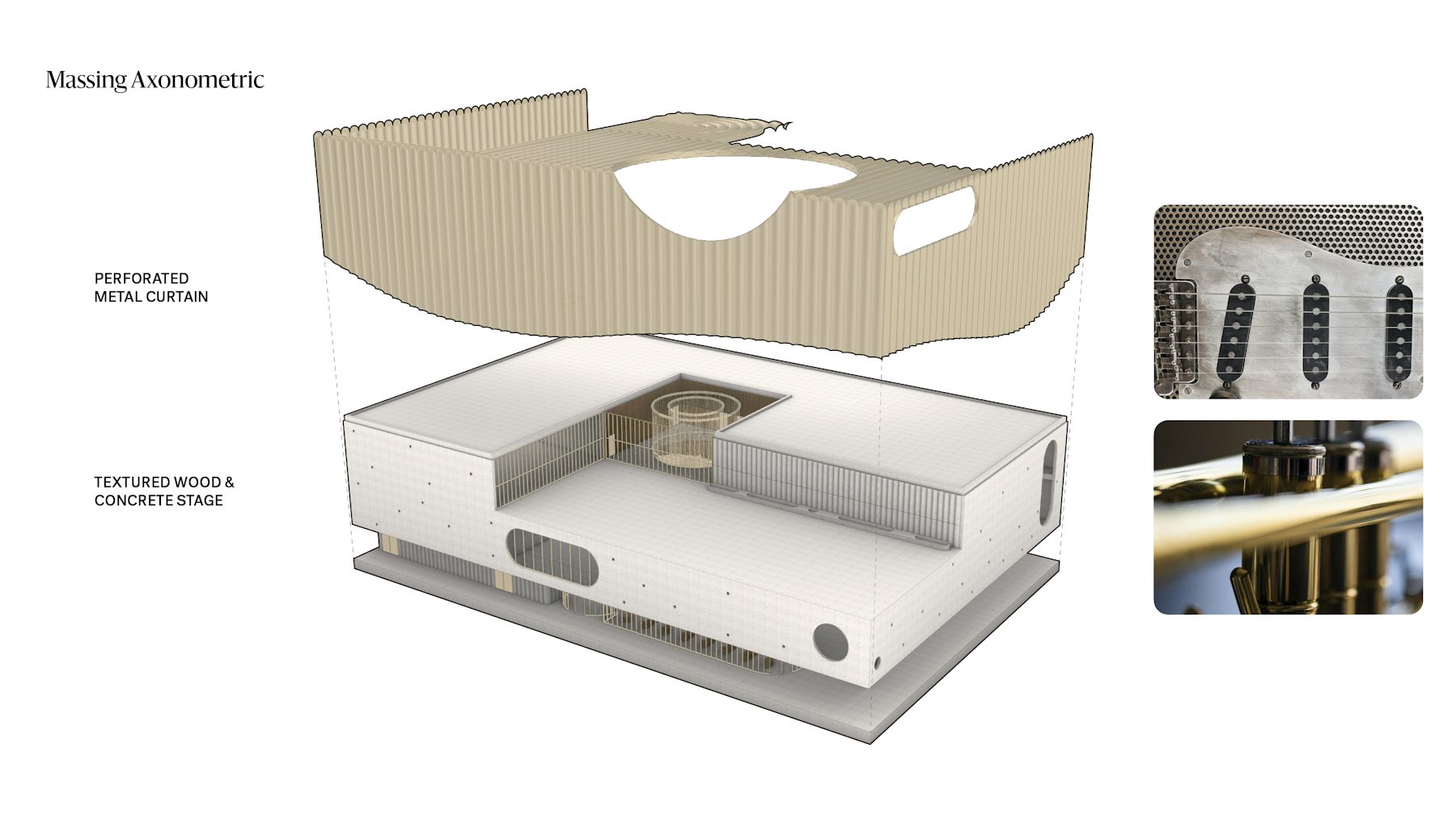
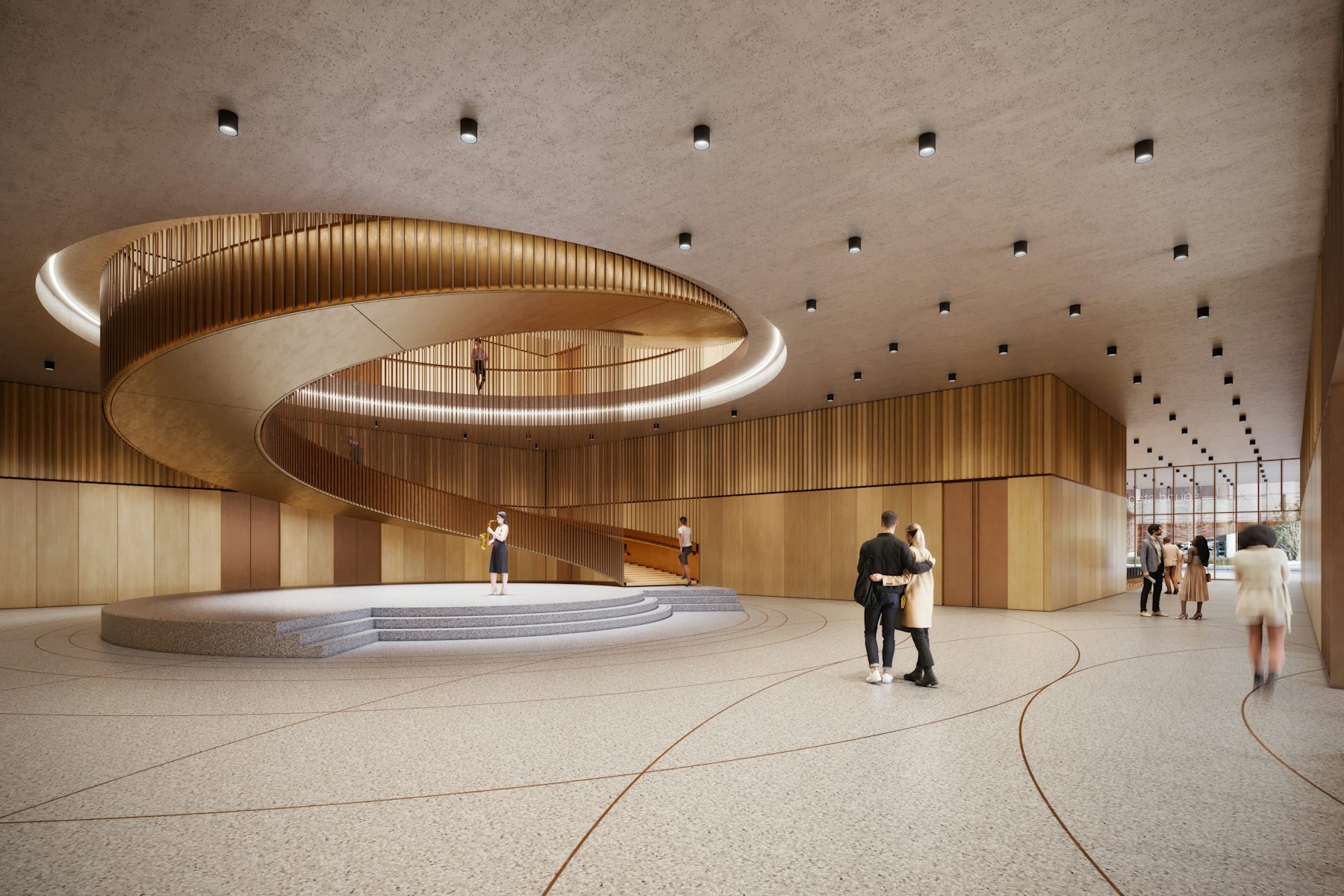
View of the vertical gallery perspective
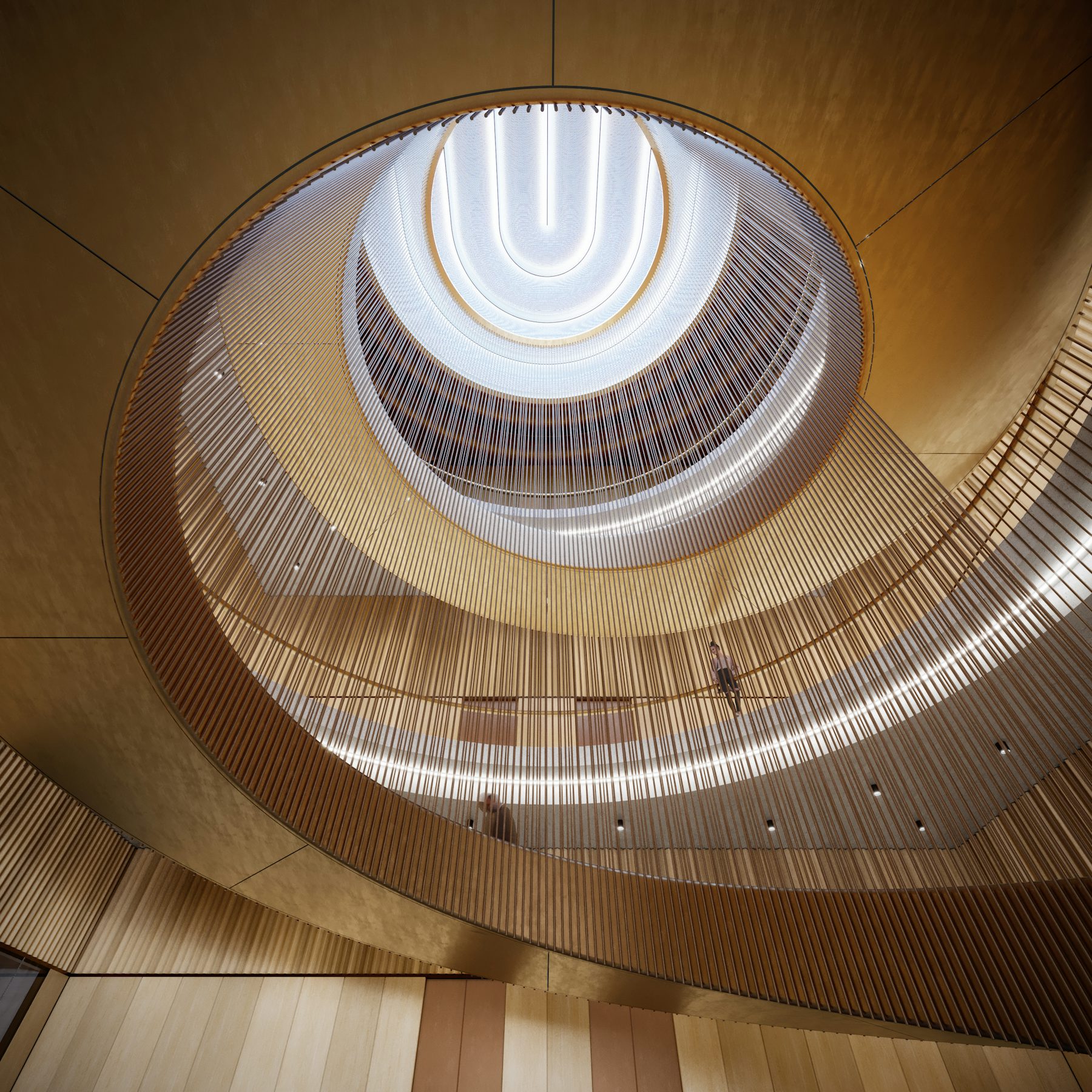
View of the vertical gallery perspective
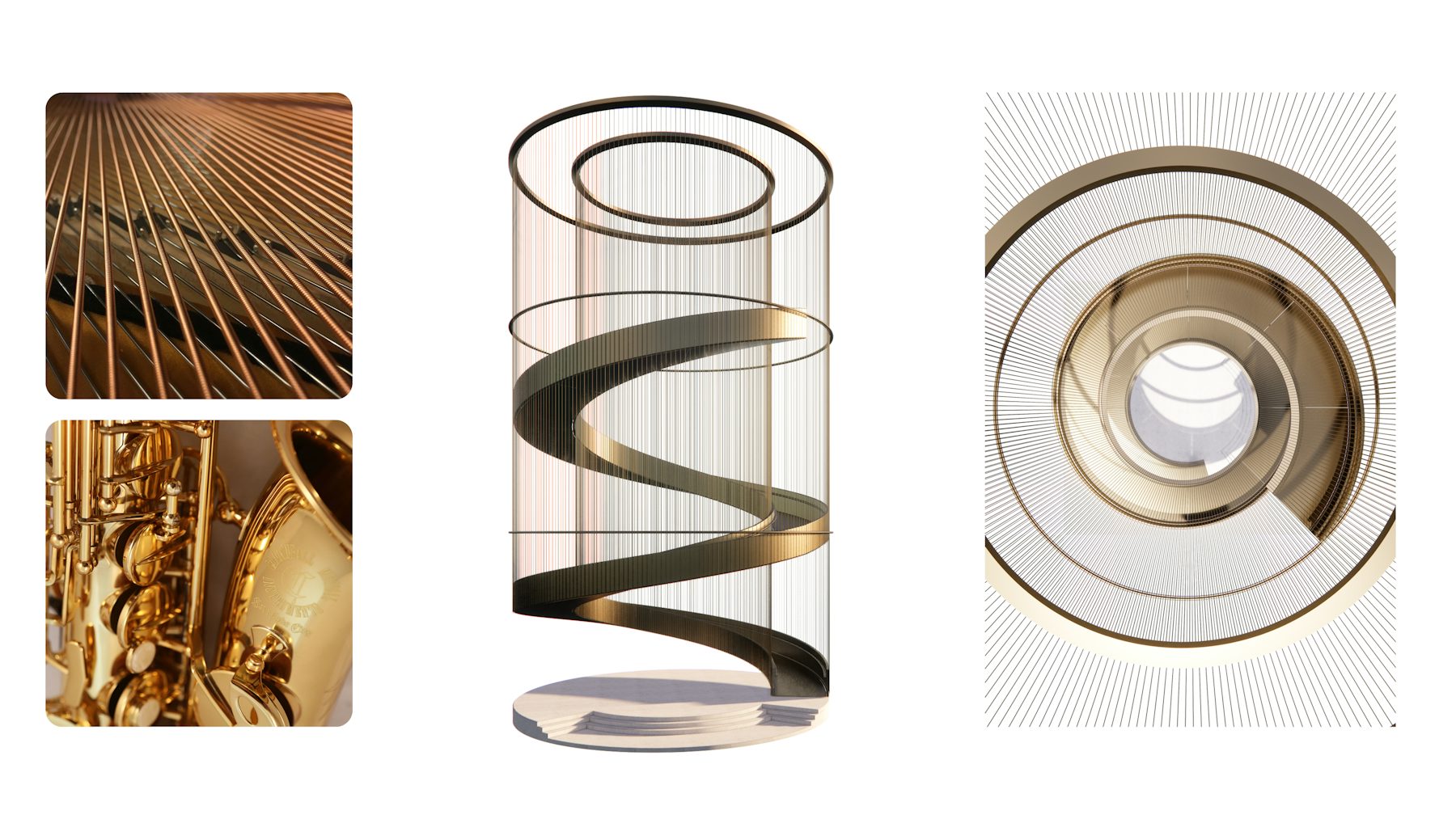
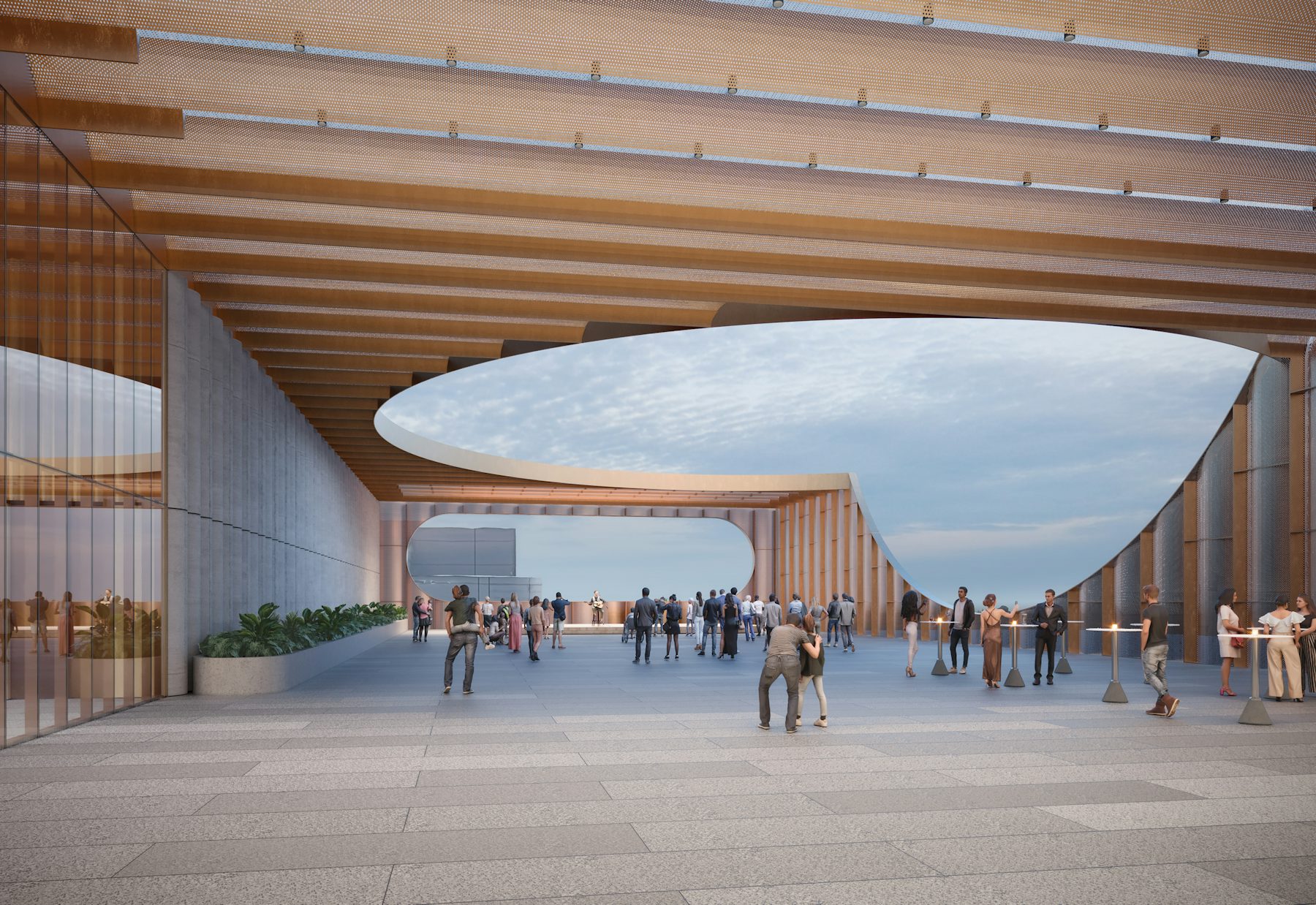
View of the Rooftop Terrace
While this creation is still in the "concept design" phase, the Louisiana Music and Heritage Experience museum board of directors continues to make a solid case for the community's need for the museum, crafting feasibility studies and garnering support for the construction of the Museum. Various Louisiana musicians have spoken in support of the museum, including Kirk Joseph of the Dirty Dozen Brass Band: "It needs to be done on a grand scale because New Orleans music has offered so much to the world over the centuries."


